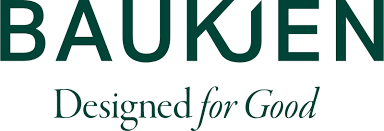Magazine print management
Magazine print management involves overseeing the production and distribution of printed products. It is a complex process that requires coordination, expertise and knowledge.
UK publishers work closely with printers and reprographic firms like ours to ensure every final publication meets their standards and reaches their audience effectively.
There are a number of factors to consider when buying print for magazine publishing, not least the quality. Poor printing could be damaging to your brand’s reputation.
What is print management?
It is the act of overseeing the entire production process, from the initial design stages to the final shipping of a magazine.
This includes coordinating with printers, gaining access to and managing data, and ensuring that all deadlines are met.
A print manager will also control the budget while making sure the final product meets all your printing quality standards, as well as ensuring it’s delivered on time and on budget.
Our role in the print production process
The team at ec2i uses technology and workflows to enhance and manage the production process for a wide range of magazines.
We are up to speed with the latest printing technologies, and can offer advice to brands on the best methods for their specific project needs.
We can also help save companies money by finding the most cost-effective options for producing printed products, a service we deliver at no extra charge to existing clients.
CMYK and other colours
Magazines are printed in CMYK: cyan, magenta, yellow and black.
These four colours are then combined to create a vast range of shades, producing high-quality images and graphics that are perfect for print.
However, some magazines may use other colour models, such as Pantone, which is a standardised colour system used in the printing industry.
The importance of paper
The paper stock used for print magazines is also an important consideration to bear in mind.
Publishers must consider the weight, texture, and finish of the paper, as well as its environmental impact.
Many printers have developed sustainable or recycled options, but it’s worth remembering that brand mailing costs will be impacted by the quality paper weight you select.
Other printed materials
Managing products also involves overseeing the production of other printed materials, such as brochures and flyers.
These can be excellent marketing, fulfilment and advertising tools, but must be produced to a high standard to effectively engage your target customer.
Magazine distribution
Publishers must consider the market, the audience, and the price point when deciding on distribution methods.
This could include stocking them at physical stores, online retailers, or through subscription services.
Some specialist companies handle magazine fulfilment, covering everything from data processing and personalisation to mailing, whether it’s UK-based, international or a combination of both.
Web-based solutions
In today's digital world, many publishers are also turning to web-based solutions to produce and distribute their magazines.
Digital can be cost-effective and more flexible as it reduces the need for physical copies, sales of which have been in steady decline for a number of years.
That said, it is crucial for publishers to consider their customers’ needs and the wider market before making the leap to digital.
Coordination and expertise
Overall, managing the printing of a magazine is a complex process that involves coordination, skill and knowledge.
It requires a deep understanding of the traditional printing and publishing industry, as well as the latest technologies and trends.
The magazine printing process
The printing processes used for magazines can vary, depending on the publication. Many are perfect bound, which means the pages are glued together along a single edge.
Perfect binding is often used for larger, quality publications, as it allows for a higher page count and a more professional look.
Other printing options include saddle-stitching, often used for smaller publications, and wiro-binding, popular for journals and notebooks.
Many magazines also have laminated covers for protection during transportation and while being read, prolonging their shelf-life.
Meeting standards
Brands should work closely with printers and reprographic companies like ours to ensure the final product meets their standards and engages their customers.
It is a complicated process and one that’s not for the fainthearted.
At ec2i, we have honed our skills over many years, buying print for a wide range of business sectors.
We will call on all our experience when we advise you about your printed projects: overseeing every aspect from concept to delivery.
Contact us
To discuss your print management needs, or anything else, you can email us at info@ec2i.biz, call 01702 541311, or fill in this contact form and we’ll get back to you straight away.
Clients Who Trust Us
We are proud to work with some of the UK's biggest brands across Retail, Publishing, Fashion, Cosmetics and FMCG markets. With many of our clients, we hold a long established relationship and we endeavour to make a difference to those we produce and manage content for.
























